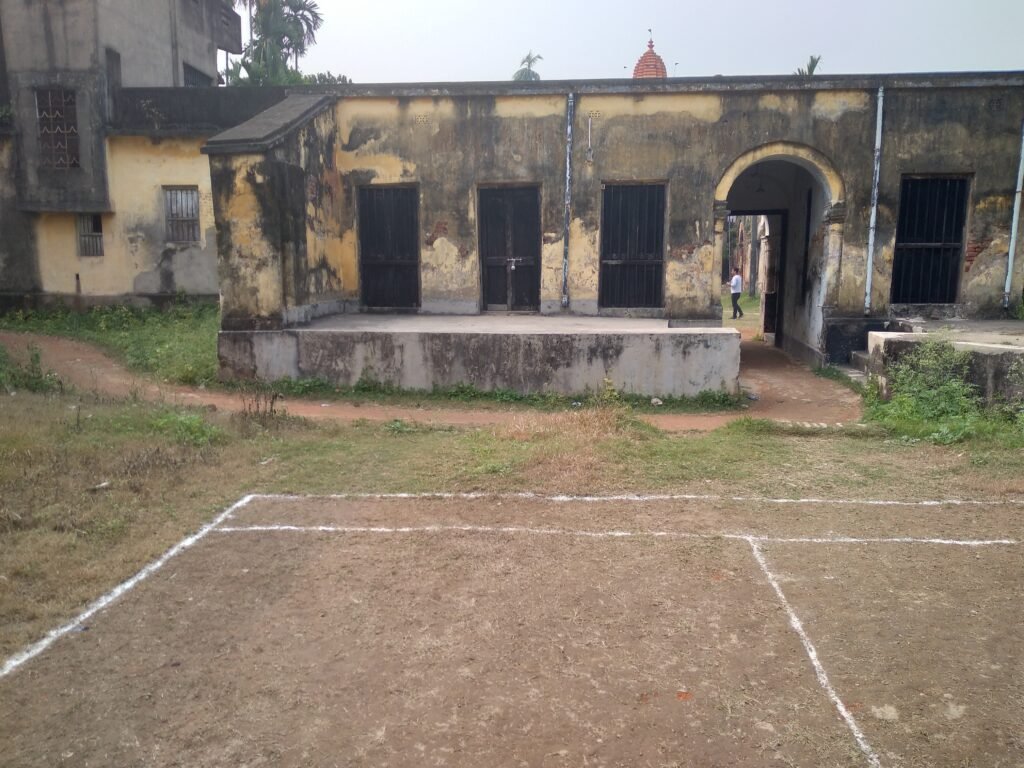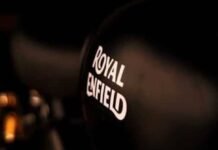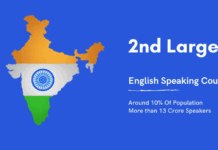Janai : Visit 2021, December End
I had been hearing of the glory of Janai and Baksa Rajbari ever since I was posted in Bengal from several people. Still, I could not pay a visit there even after the passage of considerable time in Bengal. But in the last week of December 2021, I succeeded in exploring Janai-Baksa in the company of my son ‘Saikat’ in our Bajaj Pulsar 180 CC bike.
INTRODUCTION
Janai, a small town in Hooghly, is famous for Kaliprasad Mukherjee and Haramohan Mukhrerjee’ s Raj Bari (palace). There lived three brothers; the eldest, Haramohan, then Kaliprasad, and the youngest ‘Parvati Charan.
Kaliprasad Mukherjee was a ‘Deewan’ in the East India company. He built an estate in Janai on the banks of the river Saraswati in 1834 and married Pitambari Devi of Hoogly. Durga Charan, Abhaya Charan, and Gouri Charan were the couple’s three sons.
‘Durga Charan was a legal luminary of his time. He had established the “Mukherjee & ‘Dev Solicitors’ firm with Shailendra Kishore Dev of Sova Bajar. He was also an ‘Honorary ‘Magistrate of Calcutta and Sealdah police courts. He was also the first Chief Justice of the Supreme Court. The legacy of legal expertise has been passed down from one generation to the next, to its current contemporaries. History also remembers Durga Charan for his crucial role in the theater movement in Bengal.
Next to Janai is a village called Baksa. The three Rajbaris in Baksa are ‘Mitra’ Bari, Chowdhury’ Bari, and Singhi’ Bari.
Our Journey To Janai And Baksa
On our way to Janai, the first’ Rajbari that came across was that of Kaliprasad’s. At the left of Kaliprasad Mukherjee’s house, there are two temples of Lord Shiva. Lord Shiva is their family deity. Kaliprasad Mukherjee was an ardent devotee of Lord Shiva.


But it was our misfortune that we found a big lock on the main door of Kali Babu’s house when we arrived there. When I peeped through the house’s grilled door (main door), I saw some clothes drying on the string in the courtyard. It made me feel like someone was inside the house. I looked around and saw some sculptors working. They said they lived in this house to look after it and carry out sculpture work to make their day-to-day livelihood. They informed me that the ‘Rajbari is open to the public only during ‘Durga Puja.

Abhijit Chatterjee, the maternal grandson of descendants of Haramohan Mukherjee Babu’s family, was sitting in front of the house on a chair. As I was walking down the main street disappointedly, Abhijit Babu came over to greet me.
He told the Rajbari had been closed to the public a year ago. The owner of that house and their family stayed in Kolkata, but some members were outside Kolkata. So no one lived there. “But you will not find enough space to even stand here during Durga Puja because there is a vast crowd,” said Abhijit Babu.
Janai and Baksa village’s Bonedi ‘Durga Puja is very famous. Lots of people from different places come here during the ‘Durga Puja.
Warm by nature, Abhijit Babu said: “Kaliprasad Mukherjee Rajbari is closed, so what happened? But, first, let us go to our Rajbari, Haramohan Mukherjee’s house. He was, after all, the elder brother of ‘Kaliprasad Mukherjee”.
Abhijit Babu enthusiastically took us to his house, i.e., Haramohan Mukherjee Rajbari. He said most of their family members lived in Kolkata. So responsibility for looking after the property rested with him.
“My mother is the daughter of this family. So I am the grandson of this family,” Abhijit Babu said.
“We worship Durga here according to the Shakya tradition. So here, we follow sacrificial rituals. For example, Buffalo sacrifice was an essential part of our puja from the very beginning. But we haven’t seen that. But the sharp blade (Khara in Bengali) used for the sacrificial buffalo is still preserved. Likewise, we saw goat’s sacrifice—one in Saptami, one in Asthami, and three in Nabhami. But in the past ten years, the sacrifices have stopped because of financial difficulties—instead, Pumpkin cutting is marked as symbolic of the sacrificial rituals,” said Abhijit Babu.
Abhijit Babu went on, “during the Zamindari period, there used to be traditional ‘Jatras.’ We had a dance hall. At that time, this house was a three-storied palace. The then customs forbade females from watching Jatra with the regular audience. They used to watch Jatra through the louvered windows. All traditional rituals of the Zamindari system were maintained in our family on those days. But all these activities have come to an end over time. Nowadays, the puja of the Zamindar’s house no longer retains that brilliant splendor of the yesteryears, for which it was known,” said Abhijit Babu.

“Our family deity is Madhusudan, i.e., Narayana. The family deity of Kaliprasad Mukherjee’s family is Narsingh Shiva. So everyone in our family tries to come here during Pujo. Our Durga- Puja is two hundred and ninety-seven years old. said Abhijit Babu.”

This place also serves as a set for numerous film and TV series. Abhijit babu mentioned that the popular Zee Bangla TV serial “Mithai” was shot there. They took the shots outside Mukherjee’s house. Apart from Mukherjee’ Bari, they also shot at Dwadash Shiva temples and Mitra’ Bari”, said AbhijitBabu.
The serial had a plot where the heroine carrying Janai’s traditional sweet Manohara leaves on a bicycle from Kaliprasad Mukherjee’s house.
Visit to Baksa’s Baidya Mata Mandir


It is the oldest temple in this region. About 250 years ago, the idol of Goddess Kali emerged while digging at the pond’s edge. The pond is adjacent to the temple. “You can see all the trees from here, and those trees are ancient. Devotees initially kept Mother Goddess Kali’s idol under those trees. There was a dense forest around at that time, and it was inaccessible. People, therefore, prayed to mother Kali from a distance. Gradually, with the contribution of the Zamindar family, development took place. The present temple was established in 1996”, said priest Amit Chakraborty.

In keeping with tradition, Durga Puja or any ceremony of the royal family begins after offering puja here in the Baidya Mata temple.
Visit To Baksa’s Mitra Bari: Raghunath Temple

Bhavani Charan Mitra and Parshuram Mitra contributed to the prosperity of the Baksas’ Mitra family. Bhavanicharan was the Deewan of Burdawan’s king. He looked after the property of the king of Burdwan in Baksa. Raghunath (i.e., Radha-Krishna) is the family deity of Mitras’. Raghunath (i.e., Radha-Krishna) is the family deity of Mitras’.
It is said that Rani Rashmoni built the Dakshinaswar temple in the same style, inspired by the Raghunath (Radha Krishna) temple.


The Mitra family’s Durga Puja is more than 500 years old. In keeping with age-old tradition, the male family members manually carry the Durga idol during the immersion. The bamboo framework over which the idol is placed for immersion is used for preparing the framework of next year’s Durga Idol. After immersion, the bamboo should not touch the ground till the arrival of the Durga puja next year, informed Arnabh Mitra, a youth from the Mitra family.
Visit to Baksa’s Dwadash Shiv Mandir

Bhabani Mitra, Deewan of King of Burdwan, built this temple on the banks of the river Saraswati in 1780. The village of Baksa has a mention in the 400-year-old scripture written by Abhinankon Mukunda. History shows that the Portuguese had a small port here, which gave rise to the name of this place as Baksa. Beside the Dwasash temple premises, you will find a burial ground called Shashan Kali. And behind it flows the Saraswati river. Today, it is dilapidated; once a mighty river over which maritime trade flourished during the colonial days, it is now reduced to a canal.
The Dwadash (Twelve) Shiv Mandir rests on two pedestals. Six on each pedestal and six on other pedestals. The Dwadash Shiva temple is the iconic temple of Baksa and Janai.
Visit to Baksa’s Chowdhury Bari


A paved pond, a big field, an 1866-built higher secondary school, a post office, and a colossal heritage mansion next to it. All in all, it reflects the prosperity of the Zamindar Chowdhury family. As I stepped into the 500-year-old Choudhary mansion, I was moved by the multi-pillared huge courtyard reflecting the marvel of Indo-Anglian architecture. The enclosure is also called Thakur Dalan.
Behind the courtyard is a Radha Krishna temple. The Choudhary worshiped the four-armed Goddess Durga. SachindraChoudhary, the former finance minister of India, belonged to Chowdhury Bari. But presently, none of the Choudhary family members live here.
Visit To Singhi Bari
The house looks ugly, almost dilapidated, with bricks crumbling out. No one was around to brief us. Finally, an older man leaned out of the window, stared at us, and disappeared. I read somewhere that Prasanna Singh, who translated the epic Mahabharat into Bengali, lived in Singhi Bari.


In my couple of hours’ visit to Janai and Baksha, I observed that the place is also dotted with many old and dilapidated buildings belonging to affluent families.
Conclusion Of Visit

In winters, it is dark early, so we had to hurry back home. But nature’s serene display on both sides of the path behind the Singhi Bari pampered our souls. The moss-patched pond on one side and the heart-warming greenery on the other side bring a soothing charm to our eyes. It is a pleasure to drive down the little village path amid nature’s blessings. The sight brings happiness. Happiness is all we desire. Isn’t it?
So if you are either a townie or a metropolitan and want to get away from the high-rise buildings to a serene open space, try Janai-Baksa.













































